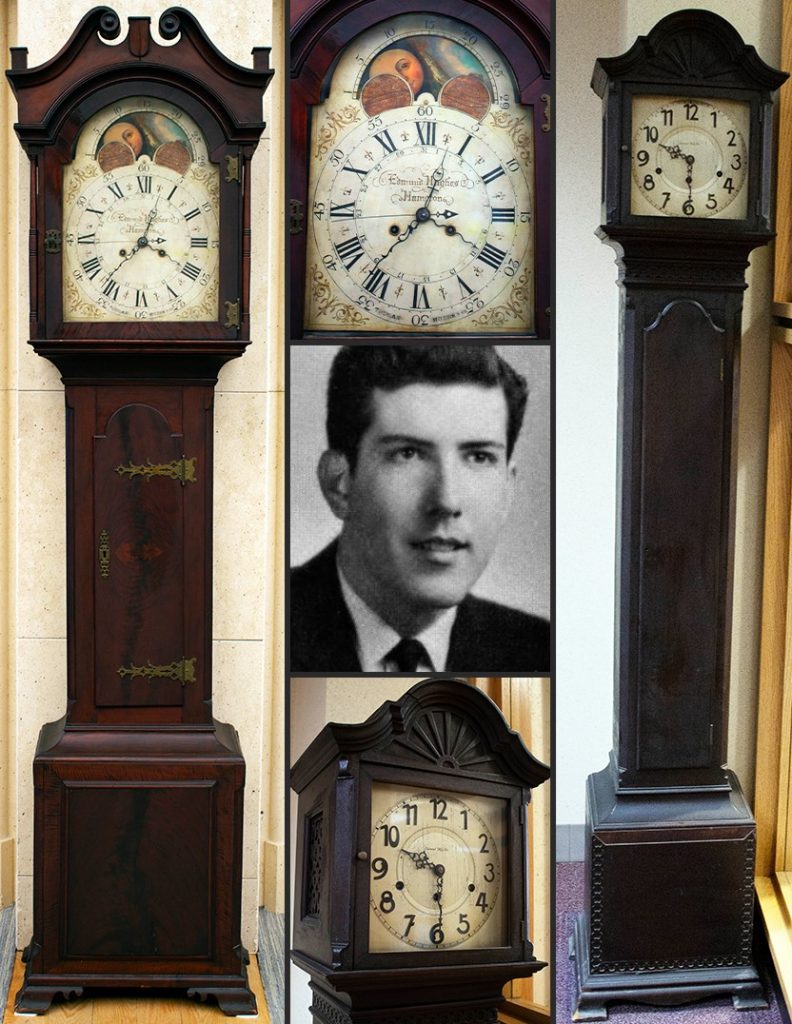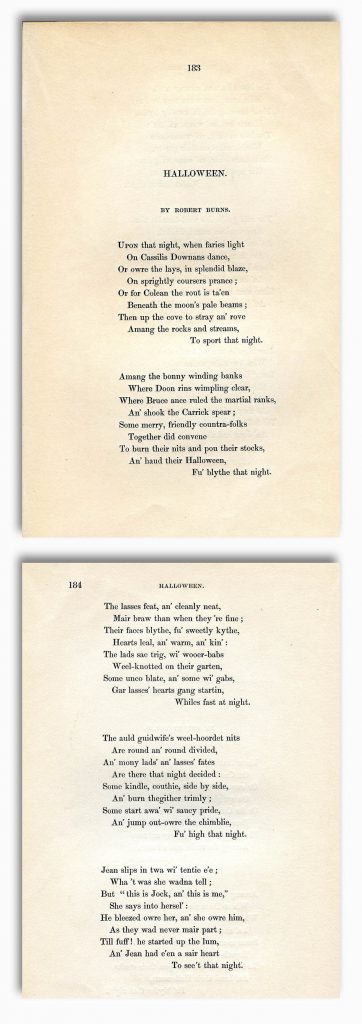Tag: McHugh Special Collections
Happy Halloween from McHugh Special Collections!
Today is the perfect time to remember William Friedkin’s classic 1973 horror film, The Exorcist. Featuring a Jesuit priest’s battle against a demonic possession, the film stars alumnus Jason Miller, ’61, H’73 and is based on the novel by William Peter Blatty. The film would earn Jason Miller an Academy Award nomination for Best Supporting Actor and Blatty a win for Best Adapted Screenplay.
The Exorcist was largely inspired by The Earling Possession Case of 1928, an exorcism conducted by Father Theophilus Riesinger in Earling, Iowa and detailed in 1932 by Rev. F.J. Bunse, S.J. Although copies are extremely scarce, one of two is preserved here at the University.
McHugh Special Collections Countdown to Halloween – Day 2
McHugh Special Collections Countdown to Halloween – Day 1
18th Century Liturgical Books
A selection of rare materials from McHugh Special Collections is currently on view in the Library’s 5th floor Heritage Room. This week we are highlighting three 18th century liturgical books (2 breviaries and a missal) from the exhibit “From Medieval to Modern”. These books are special for their ecclesiastical coats of arms and elaborate decorated bindings.
The first is the Diurnale Ebroicense (1740) by Pierre Jules César de Rochechouart (1698-1781), a French ecclesiastical man who served as Bishop of Evreux and then as Bishop of Bayeux. A Diurnale is a condensed version of a breviary, and in this case, the summer volume Pars Aestiva, from Pentecost though the 15th Sunday after Pentecost. However, this volume also contains sections for the autumn. The Diurnale Ebroicense is based on the rites practiced in Ebroicense, also known as Évreux, a diocese in northern France. This red leather binding features the coat of arms of an unidentified ecclesiastical, possibly a Bishop.
The next is the Breviarium Romanum (1740), which is a very elaborately decorated breviary that features repeating floral designs on red leather, gilt edges, and the arms of an unidentified ecclesiastical, possibly a Bishop. Finally, there is the Canon Missae. Canon Missae is the name used in the Roman Missal for the fundamental part of the Mass that comes after the Offertory and before the Communion. This impressive volume was printed at the Vatican in 1784. The engraving of the Last Supper was engraved by Carolus Grandi after an original by Joseph Passarus. The ornate gold-tooled binding features rather large floral tools that would have required significant strength to impress into the leather. It also features the arms of an unidentified ecclesiastical, possibly a Bishop.



To read more about the Weinberg Library’s Rare Book Collection visit our collection page here. “From Medieval to Modern” will be on display during normal library hours through Tuesday, April 25. On Tuesday, April 11th, Special Collections Librarian Michael Knies will discuss the exhibit at 6 p.m. in the Heritage Room of the Library. A reception will immediately follow the talk. This event is free and open to the public. For more information, please email michael.knies@scranton.edu or call 570- 941-6341.
From Medieval to Modern: The Book of Hours
A selection of rare materials from McHugh Special Collections is currently on view in the Library’s 5th floor Heritage Room. This week we are highlighting the Book of Hours from the exhibit “From Medieval to Modern”.
The Book of Hours was a Christian devotional book that became popular in northern Europe during the 14th century and has been called the Medieval best seller as many educated men and women owned them. The Book of Hours was a distillation, for laypeople, of the series of prayers said by priests, monks, nuns, etc. during the course of the day divided into sections from morning through the night. Although containing a similar collection of texts, prayers, and psalms, there is a high variation in quality depending on the budget of the purchaser. As result, each manuscript was unique with its illumination and binding. Most examples are small books with little illumination, often restricted to decorated capital letters at the start of psalms and prayers. However, the books made for the wealthy can be extremely lavish and heavily illuminated with full-page decorations and have extravagantly decorated bindings.
On display in the Heritage Room are several examples of the Book of Hours from Special Collections: two medieval leafs, a simple book, and a fine art facsimile. The first leaf is from a fine Book of Hours with inhabited borders (ca. 1440). The second leaf is from an undistinguished Book of Hours (ca. 1450-75), but has significance because it records information in French on the Dumesnil family from Loire.
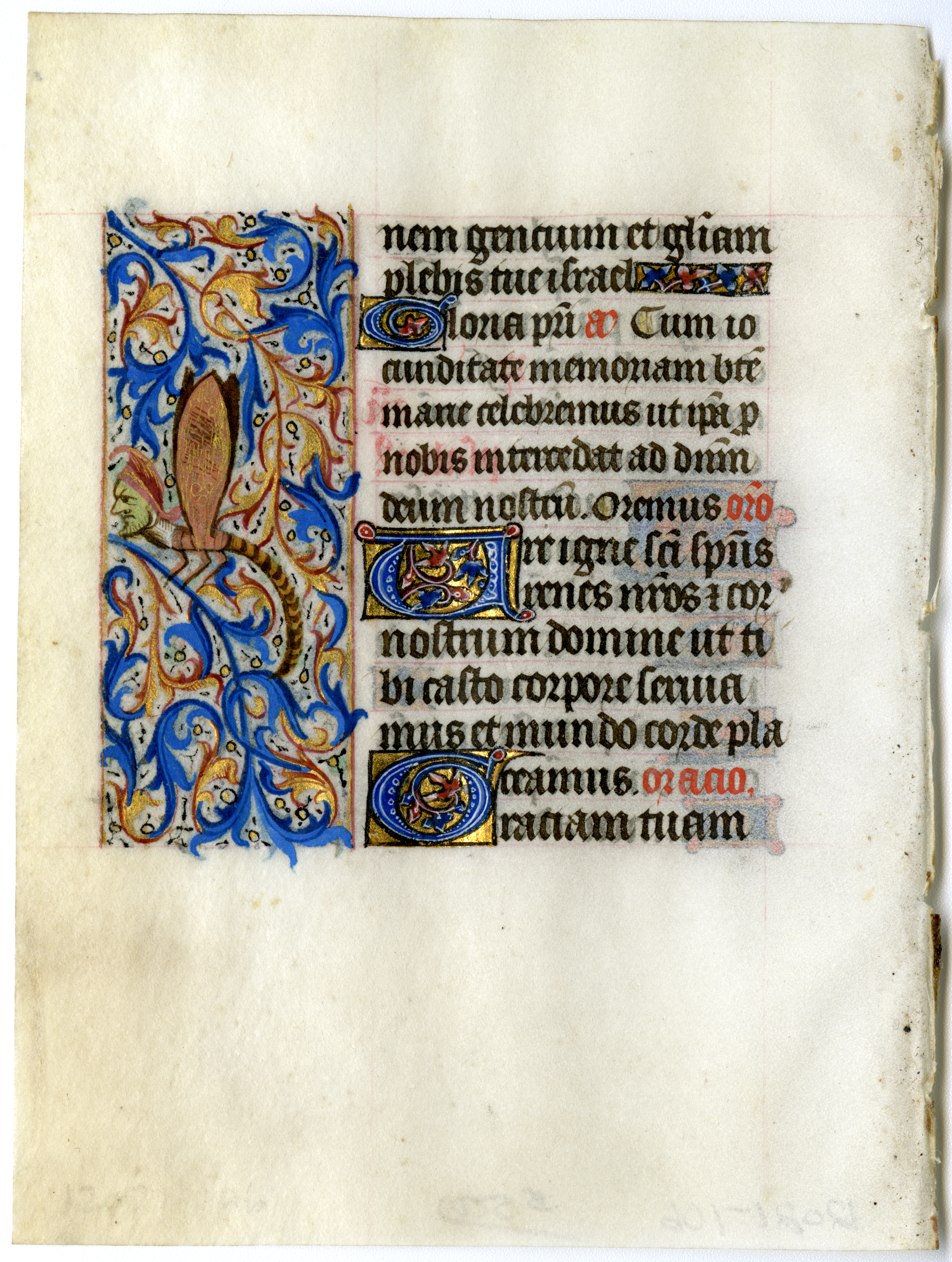
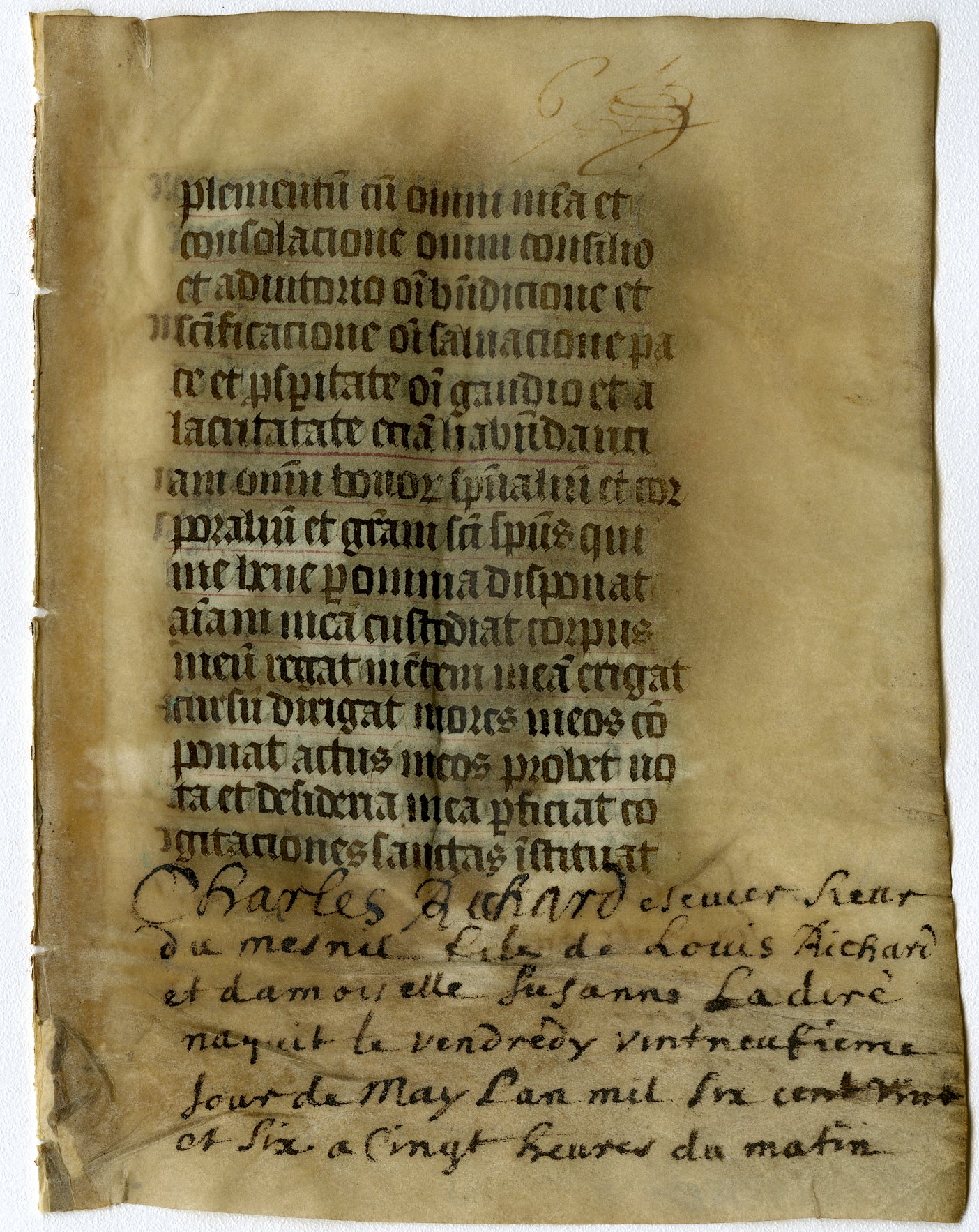
There is a Book of Hours (1685) bound in a simple blind ruled black Morocco. This binding has an unfortunately added shelfmark in addition to damaging adhesive tape. Finally, there is a fine art facsimile of a miniature, illuminated Book of Hours from the Vatican Library in brown leather with raised bands and gilt decoration.
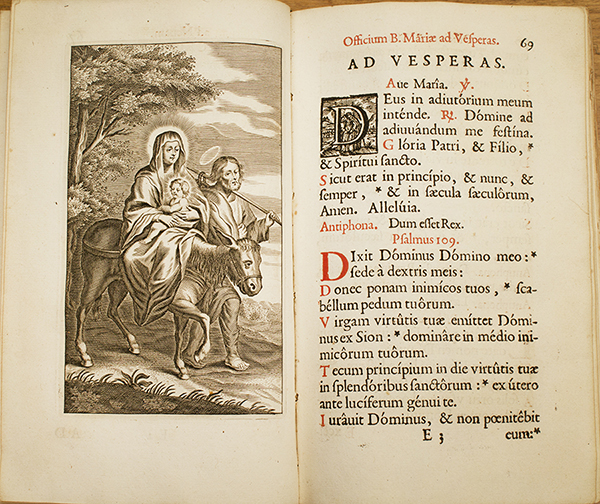
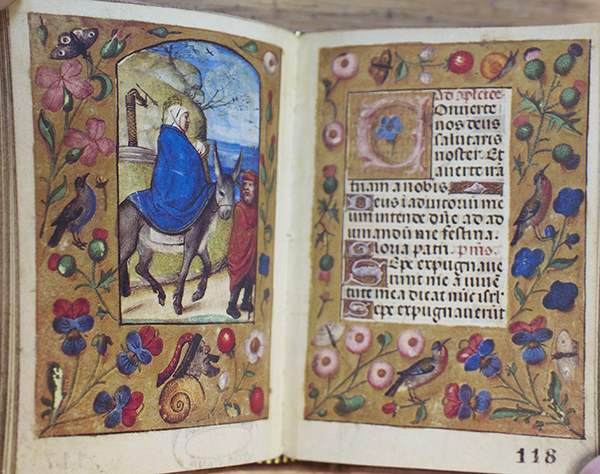
To read more about the Weinberg Library’s Rare Book Collection visit our collection page here. “From Medieval to Modern” will be on display during normal library hours through Tuesday, April 25. On Tuesday, April 11th, Special Collections Librarian Michael Knies will discuss the exhibit at 6 p.m. in the Heritage Room of the Library. A reception will immediately follow the talk. This event is free and open to the public. For more information, please email michael.knies@scranton.edu or call 570- 941-6341.
Fine Art Facsimiles: The Book of Kells and The Lindisfarne Gospels
A selection of rare materials from McHugh Special Collections is currently on view in the Library’s 5th floor Heritage Room. This week we are highlighting two fine art facsimiles from the exhibit “From Medieval to Modern”: The Book of Kells and The Lindisfarne Gospels.
In 1997, Special Collections acquired a fine art facsimile of the Book of Kells, donated by the estate of Charles J. Buckley, a dean emeritus who served the University in a variety of academic and administrative positions for 46 years.
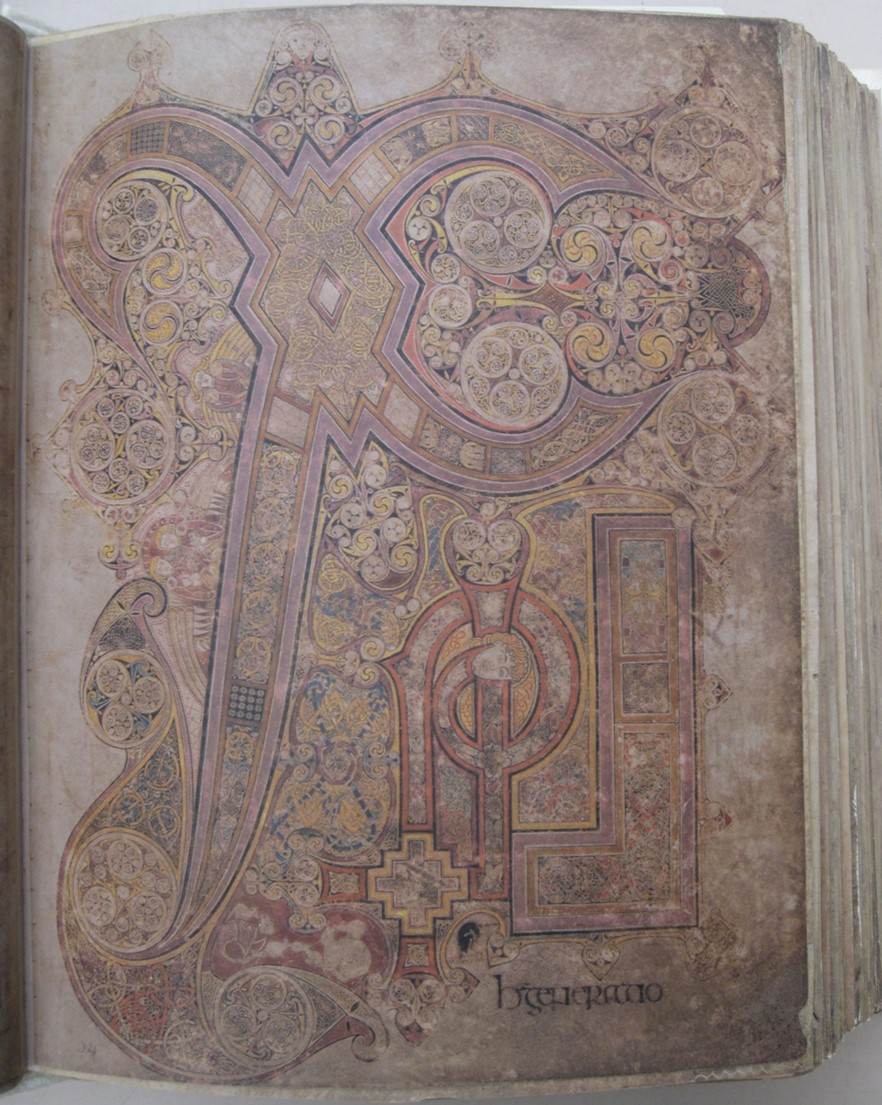
The original Book of Kells is believed to have been created around 800AD on the island of Iona off the coast of Scotland. Since the 17th century, it has been stored in the Library of Trinity College in Dublin. It is one of the world’s most famous illuminated manuscripts and is considered one of the greatest artistic productions of the Medieval period. The Book of Kells is a masterwork of Western calligraphy and represents the pinnacle of Insular illumination. It is also widely regarded as Ireland’s finest national treasure. The illustrations and ornamentation of the Book of Kells surpass that of other Insular Gospel books in extravagance and complexity. The decoration combines traditional Christian iconography with the ornate swirling motifs typical of Insular art. Figures of humans, animals and mythical beasts, together with Celtic knots and interlacing patterns in vibrant colors, enliven the manuscript’s pages. Many of these minor decorative elements are imbued with Christian symbolism and so further emphasize the themes of the major illustrations.
Only 1,480 copies of the facsimile of the Book of Kells were produced by the Fine Art Facsimile Publishers of Switzerland. The facsimile is owned by some of the most prestigious institutions in the United States, including New York’s Morgan Library and the Metropolitan Museum of Art. The facsimile edition took 10 years to produce and is considered to be indistinguishable from the original under museum viewing conditions. This accuracy extends to duplicating any damage and holes that appear in the original. The pages of the facsimile are identical in size and shape to the original manuscript pages. Of most importance to the viewer, however, is the impeccable color reproduction of the photographs. A special photographic book cradle was manufactured to hold the original safely. Kodak Ektachrome color transparencies were color corrected electronically, then passed to a lithographer who made additional color corrections by hand using as many as 10 printing inks per page. As the lithographer perfected the color balance, examples of the pages were compared with the original to fine-tune the color. After the pages were duplicated, they were sewn into gatherings hand-bound in a white skin, a book construction similar to the original.
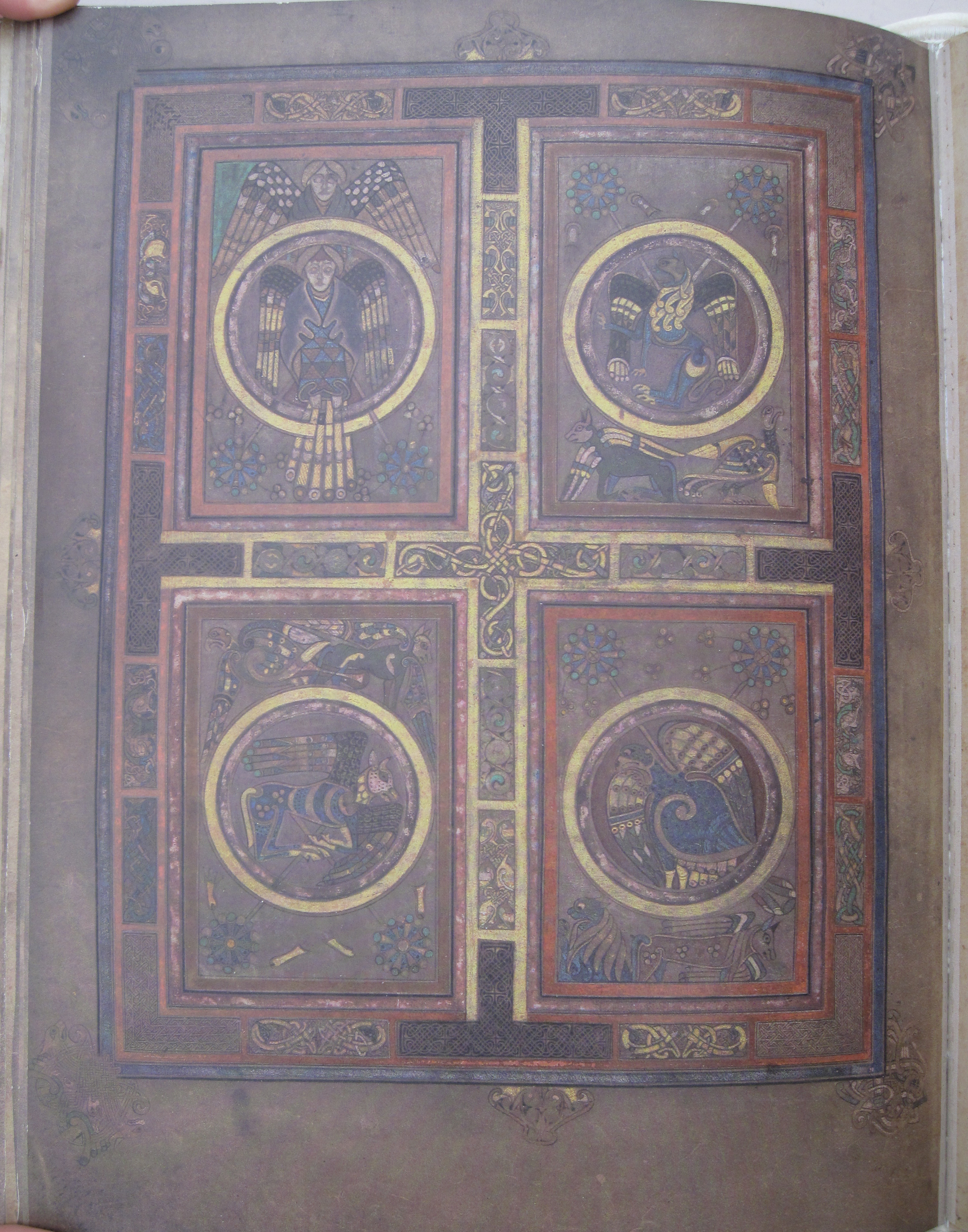
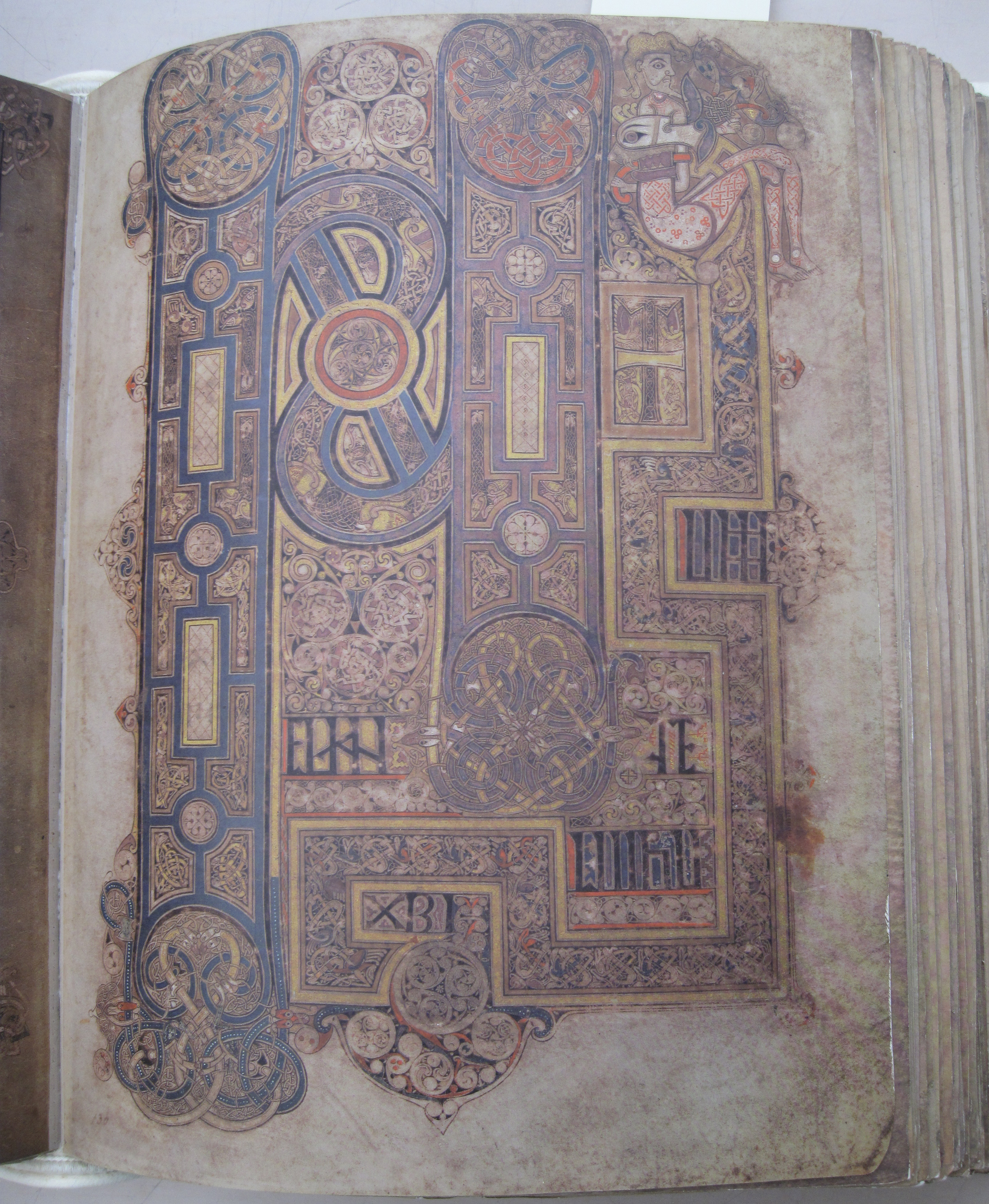
The Weinberg Memorial Library Special Collections recently received an extraordinary gift in honor of the 20th anniversary of the Library. Dr. Midori Yamanouchi, Friends of the Weinberg Memorial Library Board Member, provided funding for the acquisition of a fine art facsimile of the Lindisfarne Gospels. The original Lindisfarne Gospels is at the British Library in London and it is one of the most important and one of the best-preserved early medieval manuscripts.
 The Lindisfarne Gospels is an Illuminated manuscript gospel book created approximately 715-720 AD in a monastery at Lindisfarne off the coast of England. It is considered one of the best early versions of St. Jerome’s Latin Vulgate. The Lindisfarne Gospels also includes an interlinear Old English translation of the Gospels. This word-for-word English gloss was added to the Gospels around 950-970 AD. It is the oldest known translation of the Gospels into English.
The Lindisfarne Gospels is an Illuminated manuscript gospel book created approximately 715-720 AD in a monastery at Lindisfarne off the coast of England. It is considered one of the best early versions of St. Jerome’s Latin Vulgate. The Lindisfarne Gospels also includes an interlinear Old English translation of the Gospels. This word-for-word English gloss was added to the Gospels around 950-970 AD. It is the oldest known translation of the Gospels into English.
The fine art facsimile of the Lindisfarne Gospels was produced in 2002 by Faksimile Verlag of Luzern Switzerland, a company that specializes in the highest quality reproductions of liturgical medieval manuscripts. The facsimile was produced in cooperation with the British Library using state of the art digital photographic technology.


To read more about the Weinberg Library’s Rare Book Collection visit our collection page here. “From Medieval to Modern” will be on display during normal library hours through Tuesday, April 25. On Tuesday, April 11th, Special Collections Librarian Michael Knies will discuss the exhibit at 6 p.m. in the Heritage Room of the Library. A reception will immediately follow the talk. This event is free and open to the public. For more information, please email michael.knies@scranton.edu or call 570- 941-6341.
Dante’s Divine Comedy and the Complutensian Polyglot Bible (1514)
A selection of rare materials from McHugh Special Collections is currently on view in the Library’s 5th floor Heritage Room. This week we are highlighting two recent special acquisitions from the exhibit “From Medieval to Modern”: a facsimile of La Divina Commedia Di Dante Alighieri: Manoscritto Pal 313 and the fifth volume of the Complutensian Polyglot Bible.
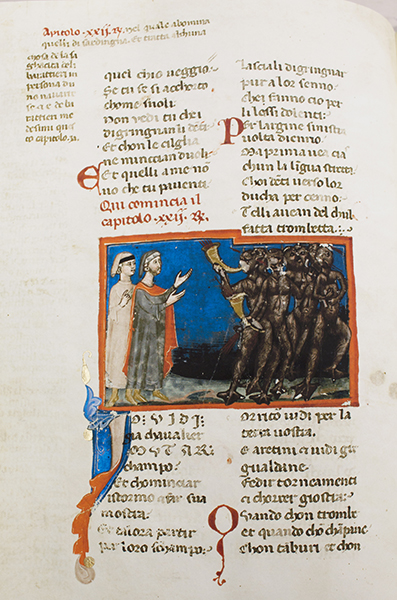
Thanks to the generosity of the Friends of Weinberg Library, McHugh Special Collections was able to purchase a fine art facsimile of the 14th-century manuscript of Dante’s Divine Comedy. The original manuscript is preserved at the Biblioteca Nazionale in Florence.
The Divine Comedy (written c. 1308-1320) is widely considered one of the greatest works of both Italian literature and world literature. The poem describes Dante’s (c. 1265 – 1321) travels through Hell, Purgatory, and Heaven in its three parts: Inferno, Purgatorio, and Paradiso, but on a deeper level is an allegorical representation of the soul’s journey towards God.
Written in littera textualis (also known as “book hand” or Gothic script), the original manuscript dates between 1333 and 1345 and is known as the Dante Poggiali, after Gaetano Poggiali, the scholar who discovered it in 1800. It is considered the first illustrated Divine Comedy ever produced and is the only surviving manuscript of its kind before 1350. This illuminated version contains 37 precious miniatures for the Inferno by the Florentine workshop of Pacino di Buonaguida. A lesser-known artist in the 14th century, Pacino took inspiration from fellow Florentine artist Giotto in his compositions for the Inferno scenes. In addition to altarpieces, Pacino painted miniatures and decorations for illuminated manuscripts. He is now considered the inventor of miniaturism, a style distinguished by a clear organization of the painting surface into multiple small-scale scenes. The Getty Museum has described Pacino’s work as having “a strong sense of expressiveness and drama.” The miniatures for the Inferno were created using tempera, gold leaf, and ink on parchment. The book also features textual glosses by Dante’s son Jacopo Alighieri whose Commento is a commentary of the text of the Inferno.
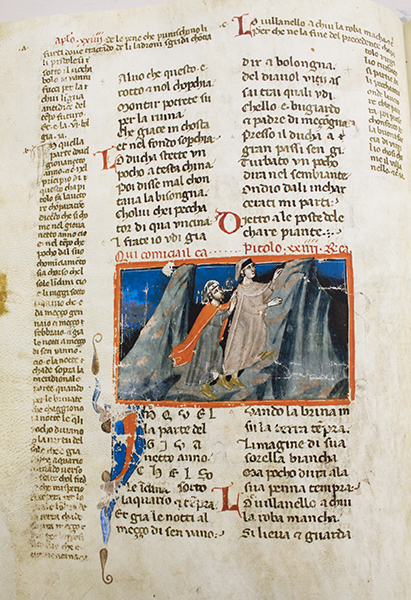
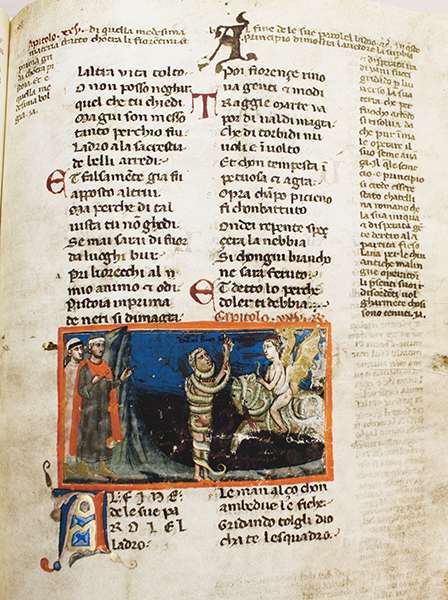
McHugh Special Collections received an important rare book donation from Paul Swift ’75 who donated the fifth volume (containing the New Testament) of the Complutensian Polyglot Bible printed in 1514 at Complutense University in Madrid for Cardinal Francisco Jiménez de Cisneros (also known as Ximenes de Cisneros).
This New Testament is from a landmark six volume Bible printed in multiple languages. The Complutensian Polyglot was the first multi-lingual Bible printed in Europe and portions contain Hebrew, Greek, Latin and Aramaic. Work on the polyglot commenced around 1502 but it took until 1517 for printing to be completed. It then took until 1520 to gain papal approval. The donated volume is the first Greek language New Testament printed in Western Europe (also printed in Latin). Mr. Swift donated it in memory of his great aunt Nellie Brown, who purchased the bible in 1931. She was the first woman to take an evening course at St. Thomas College in 1938 and went on to become a medical doctor. He also donated it in memory of his cousin Frank Brown who taught in the history department.
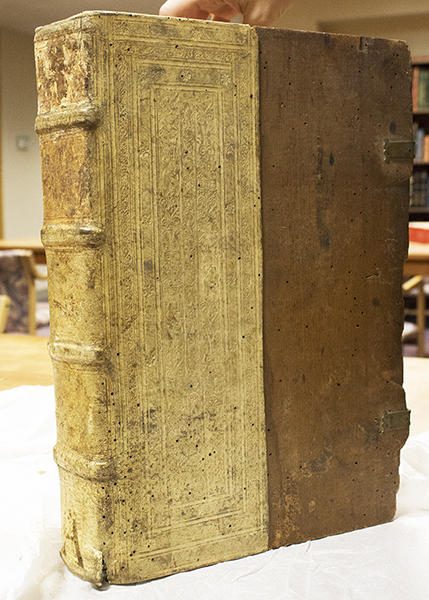

To read more about the Weinberg Library’s Rare Book Collection visit our collection page here. “From Medieval to Modern” will be on display during normal library hours through Tuesday, April 25. On Tuesday, April 11th, Special Collections Librarian Michael Knies will discuss the exhibit at 6 p.m. in the Heritage Room of the Library. A reception will immediately follow the talk. This event is free and open to the public. For more information, please email michael.knies@scranton.edu or call 570- 941-6341.
15th Annual President’s Business Council Gala Tonight in NYC
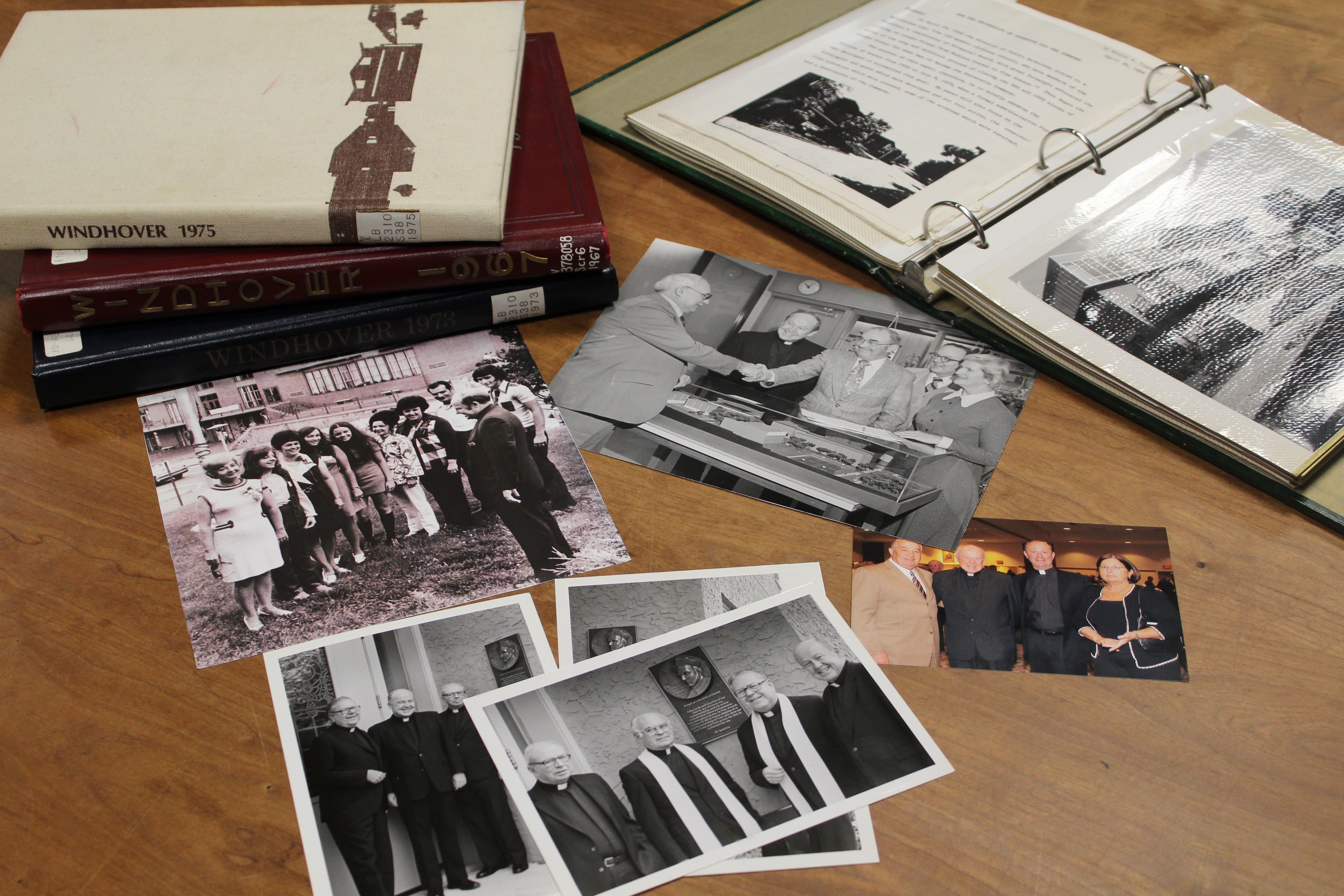
By collecting, preserving, and making available institutional records of permanent value, the University Archives serves the administration and community of the University of Scranton. This summer, staff from the University’s office of Events & Conference Services visited the Archives in search of materials for the 15th annual President’s Business Council award dinner. This gala, taking place tonight at The Pierre in New York City, recognizes individuals who have achieved excellence in their fields and who have demonstrated extraordinary compassion for others. The President’s Business Council seeks to provide meaningful networking opportunities for alumni and friends, as well as mentoring and career opportunities for current students. In addition, since the inaugural dinner, over $11 million has been generated for the Presidential Scholarship Endowment Fund, which supports full-tuition, merit-based scholarships for talented students who will become leaders of vision and integrity.
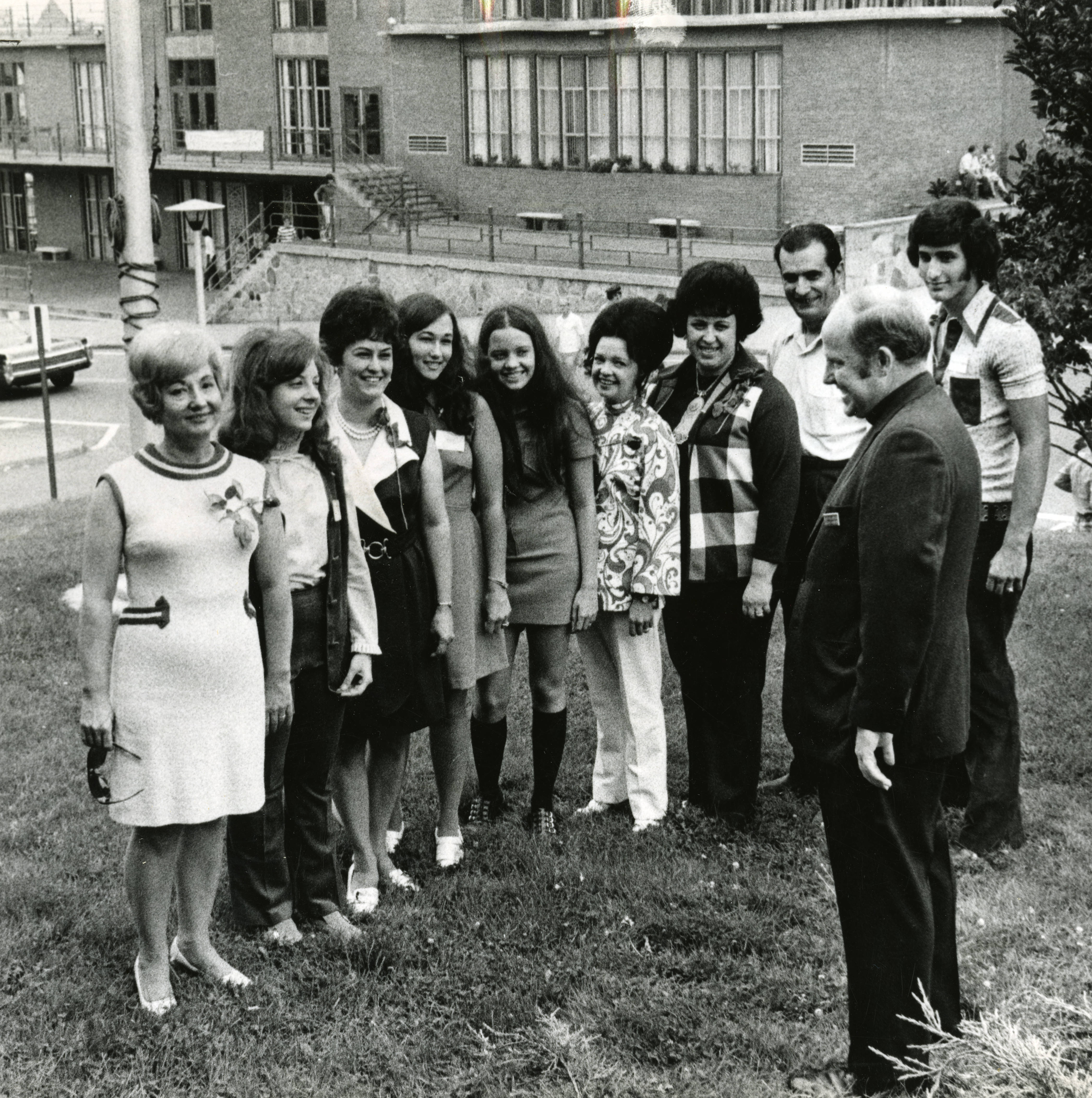
One of this year’s honorees, Rev. Bernard R. McIlhenny, S.J., arrived in Scranton in 1958 to serve as the fourth headmaster of Scranton Preparatory School. Known to many as “Father Mac,” he was appointed dean of admissions at the University in 1966 and, over a 31 year tenure, is credited with admitting more than two-thirds of the University’s living alumni. He is currently dean of admissions emeritus and serves as minister of the Scranton Jesuit Community. University Archives staff gathered materials for a video that will be presented at tonight’s gala. A selection of these materials and other documents on Fr. McIlhenny can be viewed in our digital collections.
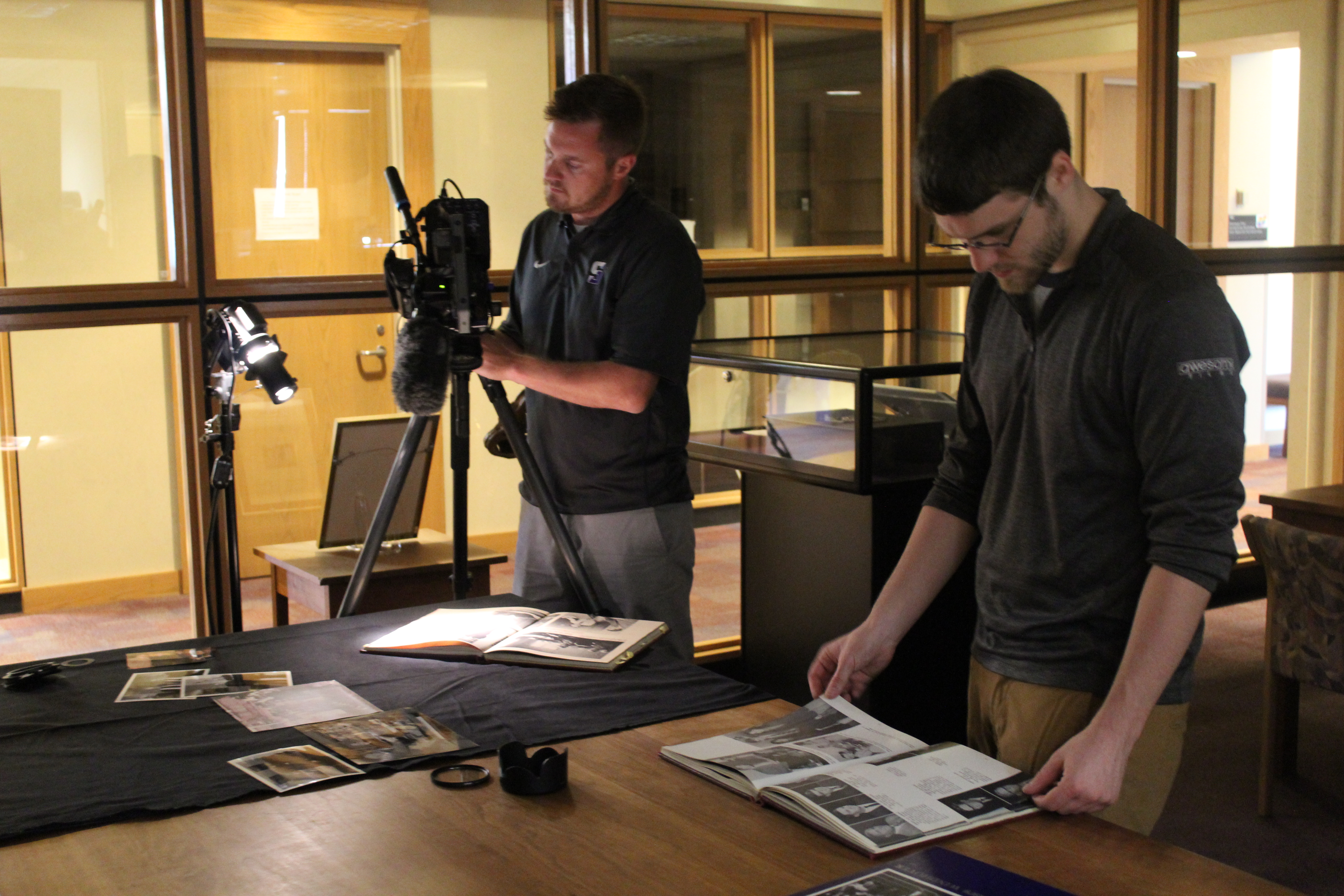
This year’s second recipient of the President’s Medal is Frank J. Dubas, Jr. ’75. This past May, Frank retired as Deloitte’s global managing partner for Sovereign Financial Institutions (SFI). Over a 42-year career, Frank held a number of client service leadership roles and built a distinguished track record of service to many multinational clients. During his tenure, many Scranton graduates were hired at Deloitte and benefited from Frank’s mentorship. A native of Jessup, Pa., Frank and his wife, Marigrace, reside in New Canaan, Ct., and have three children: Megan, Rob and Paul. Frank’s experiences as a University student were highlighted in an alumni article for the Fall 2015 issue of the Scranton Journal.
To read more news and events about the University Archives and Special Collections, visit www.digitalservices.scranton.edu.
Exhibit on Display: “Illustrating Scranton: The Drawings of Don Murray”
 Now through December 9th, the Library’s fifth floor Heritage Room will feature an exhibit on the work of local artist Don Murray. Comprised mainly of pen and ink drawings, the works on view depict the historic architecture and landmark sites of Scranton and the surrounding northeast Pennsylvania landscape. Marked by a sophisticated ability to render architectural detail, Murray’s works demonstrate his technical skill in pen and ink that he acquired through professional training as a draftsman while serving in the Armed Forces in the 1940s. Through the G.I. Bill, Murray was later able to enroll in the Murray School of Art in Scranton where he further refined his artistic ability. Murray’s faithful reproductions of Scranton’s landmarks are considered by many to contribute to the preservation of the city’s architectural heritage.
Now through December 9th, the Library’s fifth floor Heritage Room will feature an exhibit on the work of local artist Don Murray. Comprised mainly of pen and ink drawings, the works on view depict the historic architecture and landmark sites of Scranton and the surrounding northeast Pennsylvania landscape. Marked by a sophisticated ability to render architectural detail, Murray’s works demonstrate his technical skill in pen and ink that he acquired through professional training as a draftsman while serving in the Armed Forces in the 1940s. Through the G.I. Bill, Murray was later able to enroll in the Murray School of Art in Scranton where he further refined his artistic ability. Murray’s faithful reproductions of Scranton’s landmarks are considered by many to contribute to the preservation of the city’s architectural heritage.

Among the works on view is a pen and ink drawing of the Municipal Building, which has been the seat of municipal government in Scranton since the 1890s. Designed by local architect Edwin L. Walter in 1888, Scranton City Hall borrowed the Victorian Gothic style of the Lackawanna County Courthouse. In 1981, it was added to the National Register of Historic Places.
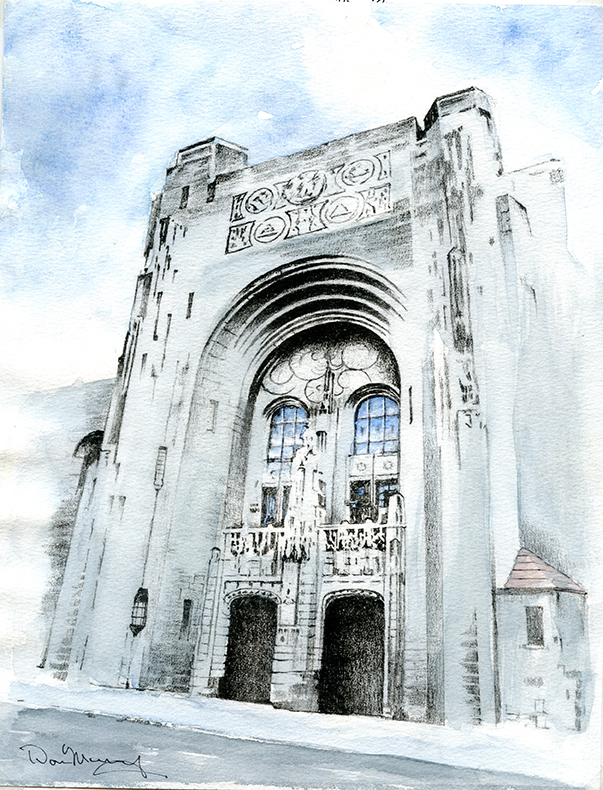
Also on view is a watercolor painting of the neo-Gothic façade of the Scranton Cultural Center, formerly known as the Masonic Temple. Built in 1927, the Masonic Temple and Scottish Rite Cathedral was designed by architect Raymond Hood, whose best-known works include the Tribune Tower in Chicago and Rockefeller Center in New York City.
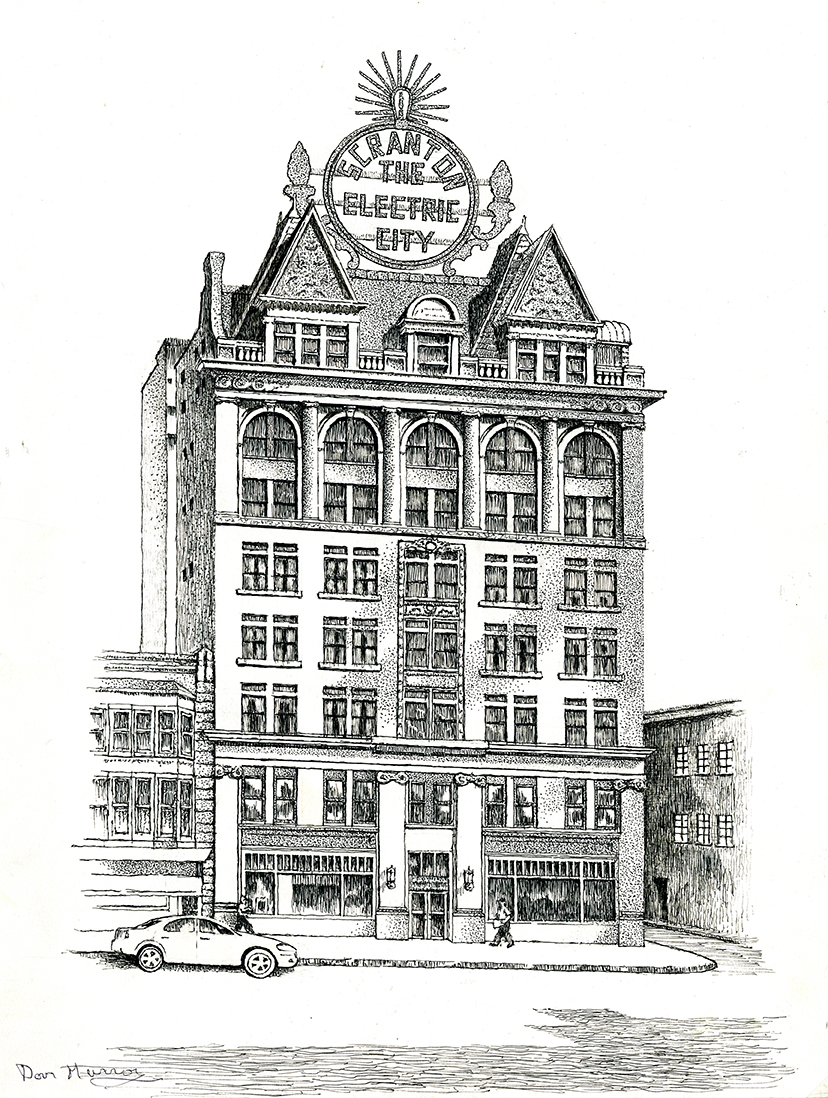
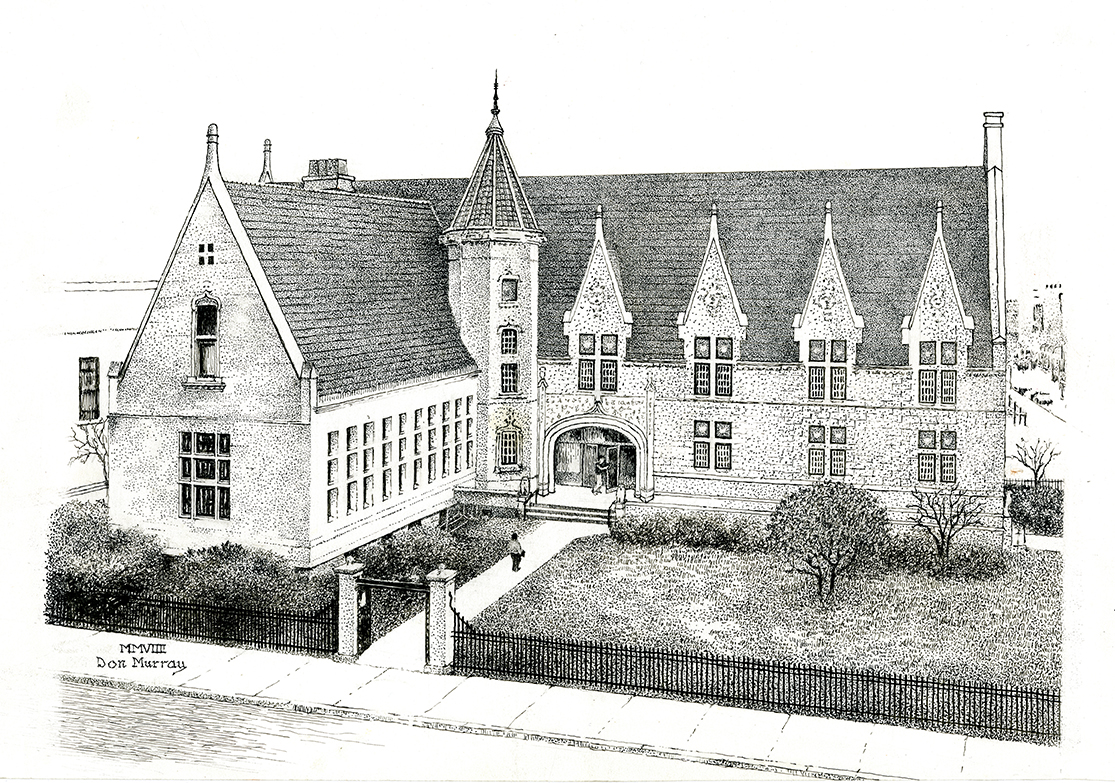
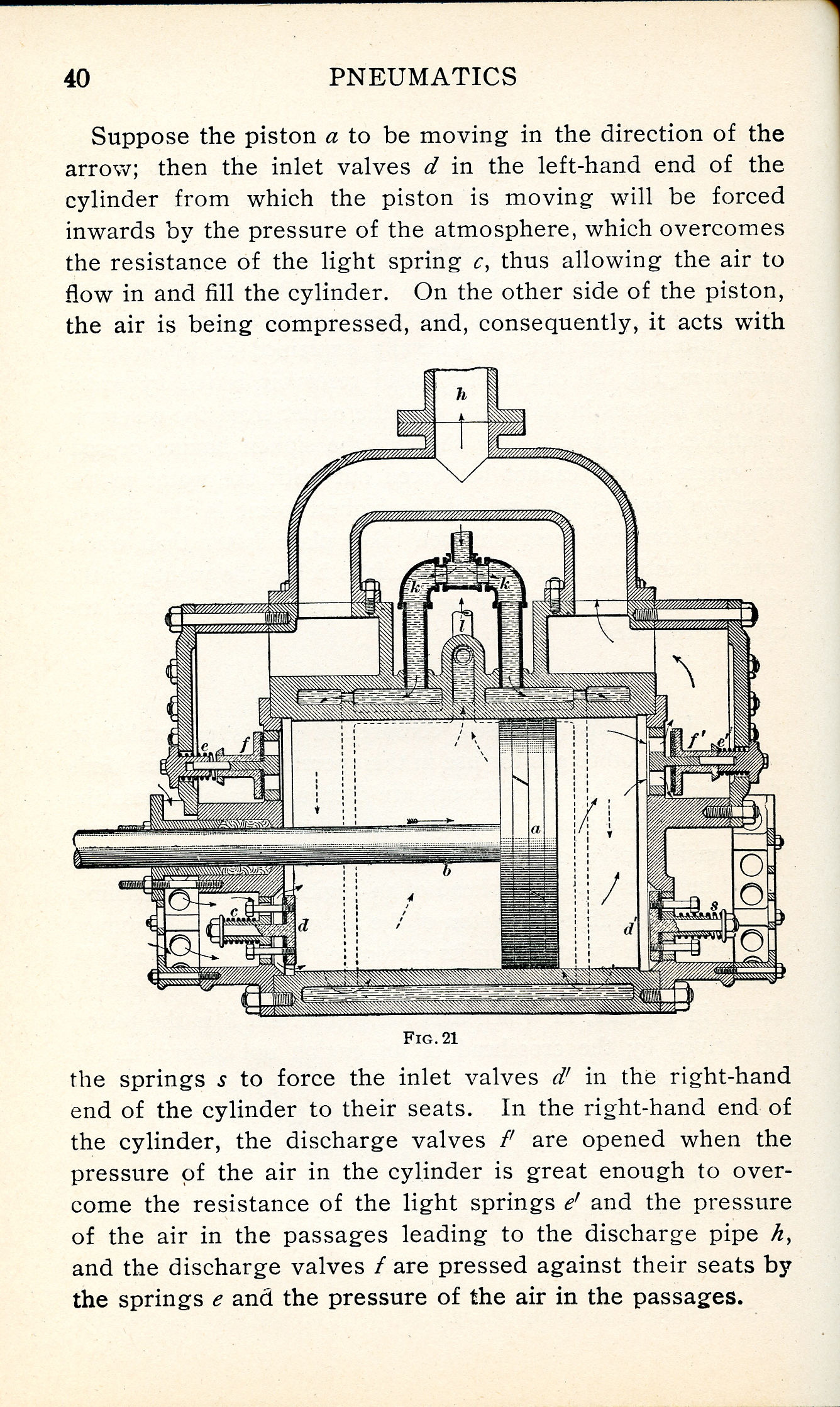
For 17 years, Murray served as chief illustrator at the International Correspondence Schools (ICS) in Scranton where he produced technical drawings for instructional texts on a variety of subjects, including mechanical drawing. While unattributed, the mechanical drawing shown here serves as an example of the type of drawing Murray prepared for ICS course books. Later in his professional career, Murray worked on specification drawings for product manuals in the drafting department at Ingersoll Rand.
The exhibit will be on display during normal library hours in the fifth floor Heritage Room through Friday, December 9, 2016. On Tuesday, October 25th at 6pm the Weinberg Memorial Library will host a reception and exhibit talk. This event is free and open to the public. For more information, please contact Special Collections Librarian, Michael Knies. michael.knies@scranton.edu, (570) 941-6341.

